Thousand Oaks, CA Pollen and Allergy Report for Summer 2023
Pollen Allergy Trends in Thousand Oaks, CA
When is pollen lowest in Thousand Oaks, CA?

February
Lowest month total PPM
Avg. PPM
When is pollen highest in Thousand Oaks, CA?

March
Highest month total PPM
Avg. PPM
How does pollen in Thousand Oaks, CA compare to California?
Thousand Oaks has a lower average PPM than the state of California.
Thousand Oaks yearly avg PPM:
California yearly avg PPM:
How does pollen in Thousand Oaks, CA compare to the USA?
Thousand Oaks has a lower average PPM than the USA.
Thousand Oaks yearly avg PPM:
USA yearly avg PPM:
Is pollen worse this year in Thousand Oaks, CA?
Spring 2023 was better than spring 2022.
Spring 2023 PPM:
Spring 2022 PPM:
Average PPM in Thousand Oaks, CA
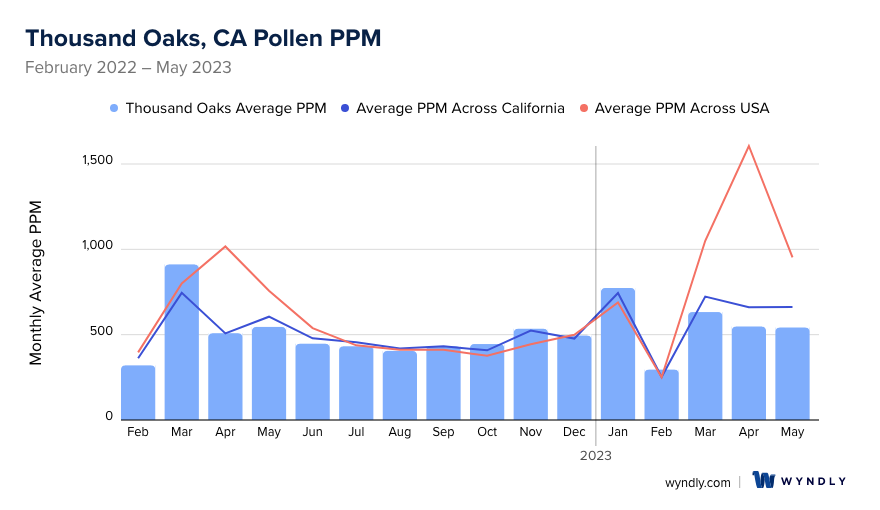

Thousand Oaks, CA Pollen and Allergy Breakdown by Month
Grass
When is grass pollen highest in Thousand Oaks, CA?
May has the highest grass pollen in Thousand Oaks, CA with an average PPM of
When is grass pollen lowest in Thousand Oaks, CA?
December has the lowest grass pollen in Thousand Oaks, CA with an average PPM of
Tree
When is tree pollen highest in Thousand Oaks, CA?
March has the highest tree pollen in Thousand Oaks, CA with an average PPM of
When is tree pollen lowest in Thousand Oaks, CA?
August has the lowest tree pollen in Thousand Oaks, CA with an average PPM of
Weed
When is weed pollen highest in Thousand Oaks, CA?
November has the highest weed pollen in Thousand Oaks, CA with an average PPM of
When is weed pollen lowest in Thousand Oaks, CA?
February has the lowest weed pollen in Thousand Oaks, CA with an average PPM of
Thousand Oaks, CA Pollen Monthly Breakdown by Pollen Type
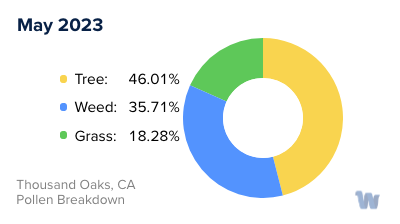
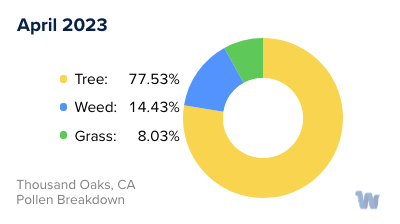
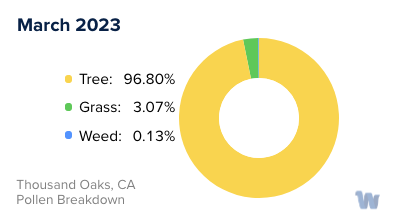
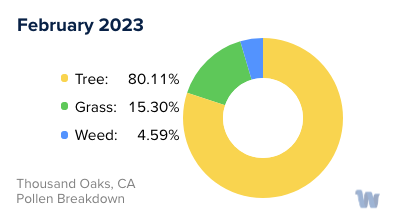
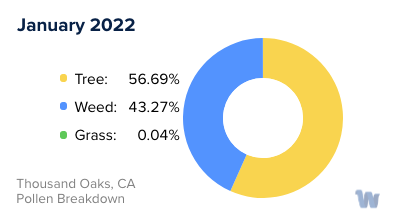



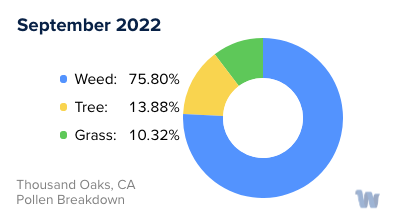
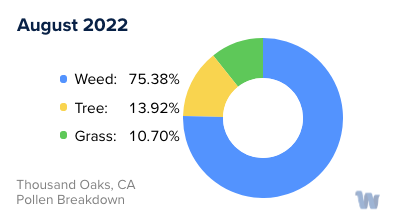





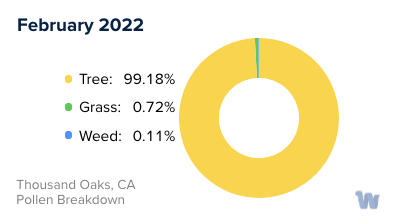
Pollen and Hay Fever in Thousand Oaks, CA
In the picturesque Thousand Oaks, California, residents and visitors alike relish the beautiful landscapes and scenic views. However, for those sensitive to pollen, this region can pose some seasonal challenges.
Pollen allergies, commonly known as hay fever, occur when the immune system reacts to pollen as if it were a harmful substance. The body responds by releasing histamines, which cause allergy symptoms like sneezing, itching, and a runny nose. Thousand Oaks, much like other areas, experiences various types of pollen throughout the year.
During the spring season, tree pollen is most prevalent. Trees such as oak, pine, and ash release pollen that can be carried by the wind. These tree pollens are often the culprits behind the sneezing and sniffling that many experience during this time of year.
As we transition into summer, grass pollen takes center stage. In Thousand Oaks, Bermuda grass and ryegrass are common, and they release pollen that becomes airborne. Grass pollen tends to be highly allergenic, meaning that even people who don't typically suffer from allergies might find themselves affected during this season.
In the fall, weed pollen, particularly from plants like ragweed and sagebrush, becomes more prevalent. These pollens can travel long distances in the wind, so even if these plants are not directly in your vicinity, you may still be exposed to their pollen.
It's important to note that Thousand Oaks is also subject to the year-round presence of mold spores, which, while not pollen, can trigger similar allergy symptoms.
Being aware of the types of pollen and their respective seasons in Thousand Oaks can help individuals better understand and anticipate their pollen allergies. Though the city is a beautiful place to live and visit, it is wise to be mindful of pollen levels, especially during peak seasons.

